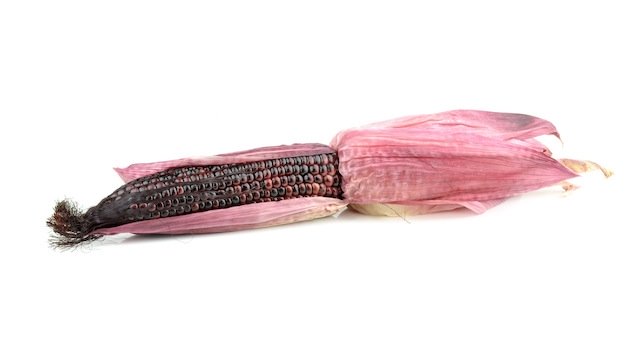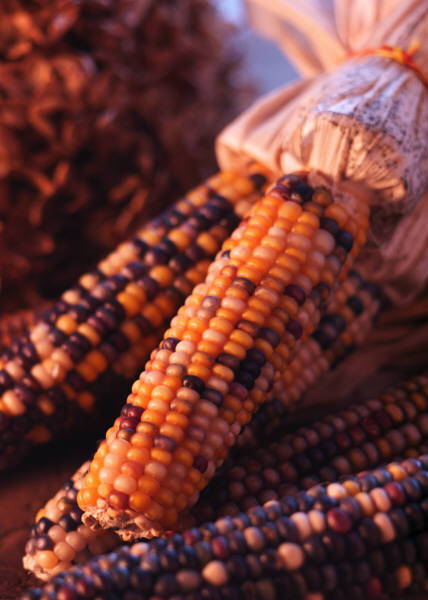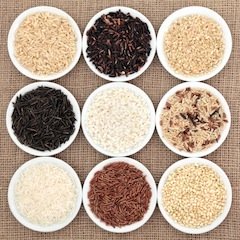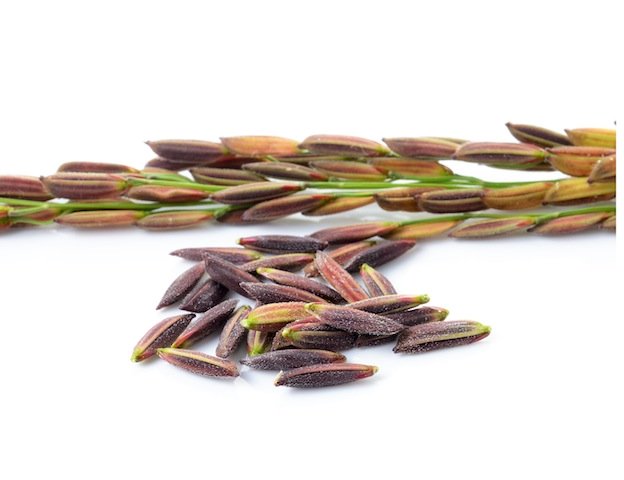Grains as Antioxidant Foods
 5 Different Types of Grains
5 Different Types of GrainsGrain crops or cereal crops are mainly "grass" plants grown for their grains.
 Red Corn
Red Corn Yellow Corn
Yellow CornExamples are:
- Barley
- Corn
- Millets
- Oats
- Rice
- Sorghum
- Triticale
- Wheat
What is Whole Grain?
Whole grain refers to the kernel of the grain, which is made up of 3 parts:
1) the bran - the outer part of the kernel, and is multi-layered
Nutrition wise, it contains antioxidants, fiber and Vitamin B
2) the endosperm - the first inner part of the kernel
Nutrition wise, it contains starchy carbohydrates, and small amounts of protein and minerals.
3) the germ - the second inner part of the kernel, embedded in the endosperm.
Nutrition wise, it contains Vitamin B, protein, minerals and fats (good fats).
Refined Grain Products
Essentially, the refining process removes the bran and the germ, resulting in the loss of approximately 25% of the nutrients, including 17 key nutrients.
Brown rice is the whole grain, while white rice is its refined version.
 Different Types of Rice
Different Types of RiceWhat is Gluten?
Gluten is a type of protein found in:
- wheat
- barley
- rye
- triticale
People who are not able to digest this protein or have trouble digesting this protein are termed gluten intolerant.
Celiac disease is a form of auto immune disease from gluten intolerance.
Grains' Main Nutrients
Depending on the grains ... in general, grains have one or a combination of the following nutrients:
- Antioxidant: Polyphenols, Selenium,
- Other: Protein, Fiber, Magnesium, Zinc, Copper, Manganese, Selenium, Vitamin B
Interesting stuff on Grains
Native to:
Different grains comes from different parts of the world.
- Barley - Western Asia, Northeast Africa
- Corn - Mexico
- Millets - Semi-arid tropics areas of Asia and Africa
- Wheat - Southwstern Asia
Now Found/Grown in:
Grains, like many plants have "migrated" to be grown in other parts of the world, but due to that they usually are grown in large areas as crops, and also tendency to need to have "climate suitability", their "migration" is not as wide as some other plants.
Sometimes known as Grains
The following are sometimes referred to as grains, due to their looks resembling grains, or in cooking treated more like grains, etcetera:
- Amaranth
- Buckwheat
- Wheat Germ
For the purposes of classification, they are considered seeds, and are included in "Antioxidant Seeds" section.
Examples of Health Benefits of Grains
Depending on the type of grains ... in general, the health benefits of the grains could be one or a combinations of the following:
- Reduce risks of stroke
- Reduce risks of heart disease
- Control blood sugar, especially helpful for Type 2 diabetes
- Reduce risk of cancer (in particular colorectal cancer)
- Help regulate blood pressure
- Help in prevention of gum disease
- For weight management
Some Precaution
For those who are gluten intolerant, do note that grains contain gluten.
As replacement food similar to grains which are gluten free, some folks have used:
- Amaranth
- Quinoa
 Riceberry, a cross-bred rice, known for its antioxidant properties
Riceberry, a cross-bred rice, known for its antioxidant propertiesDo you have a PASSION you want to share with the world??? What better exposure than the INTERNET?!!!
Want to consider?
Well, you will need a place to "host" (place) your site, then the tools to build, run as well as track the performance of your Masterpiece!
OR, if you already have a site, but find that you are paying too much for tools and apps to run and track your site ...
Here's an All-in-One Solution for you! Hosting, as well as Tools to build, run and track!
